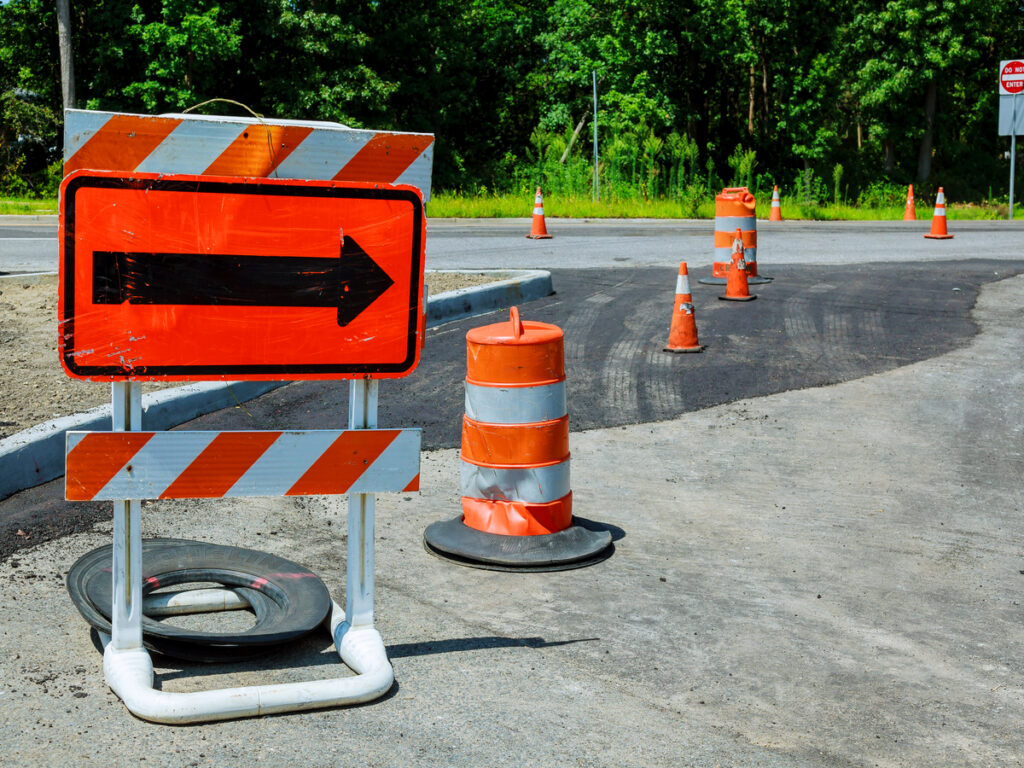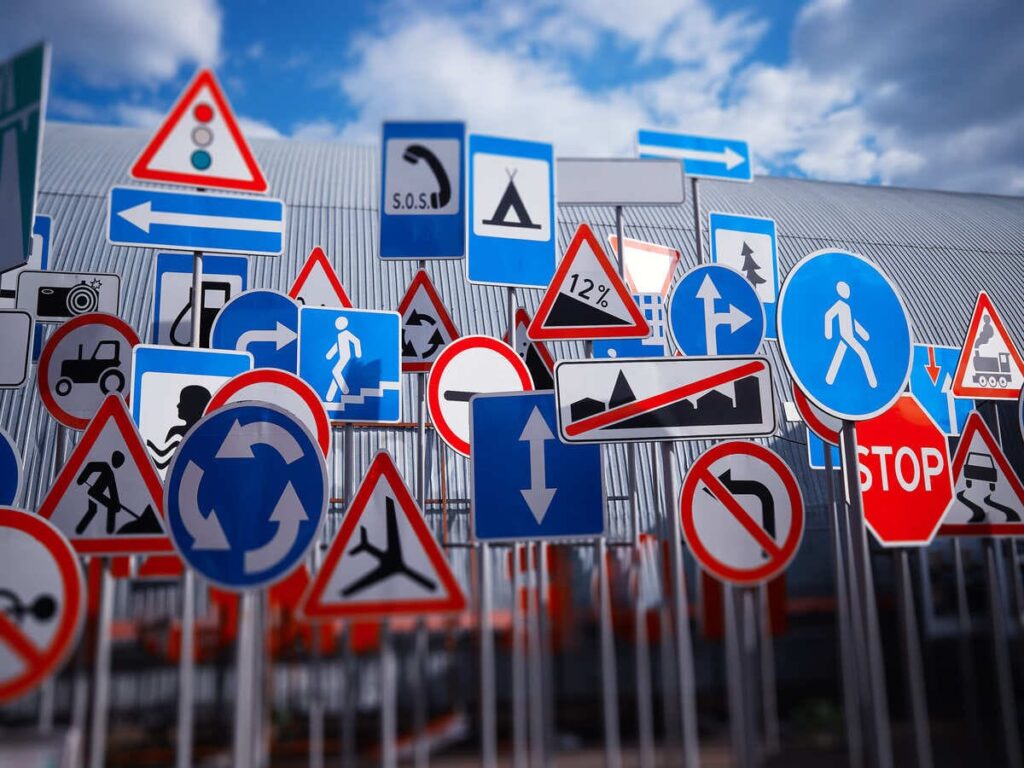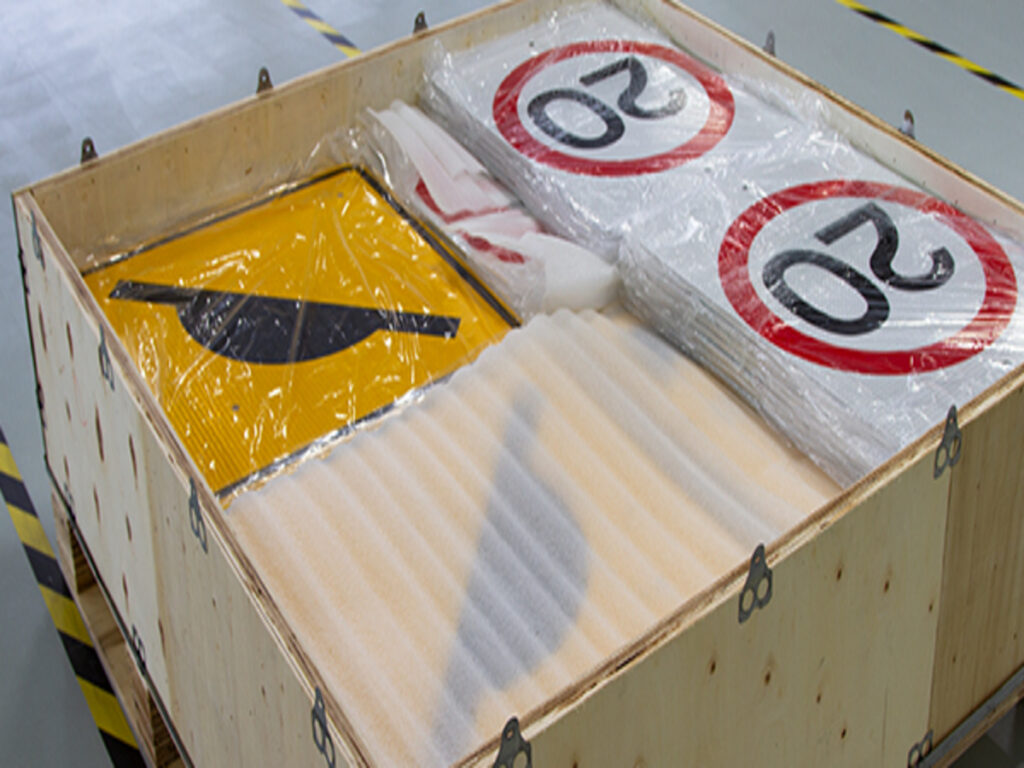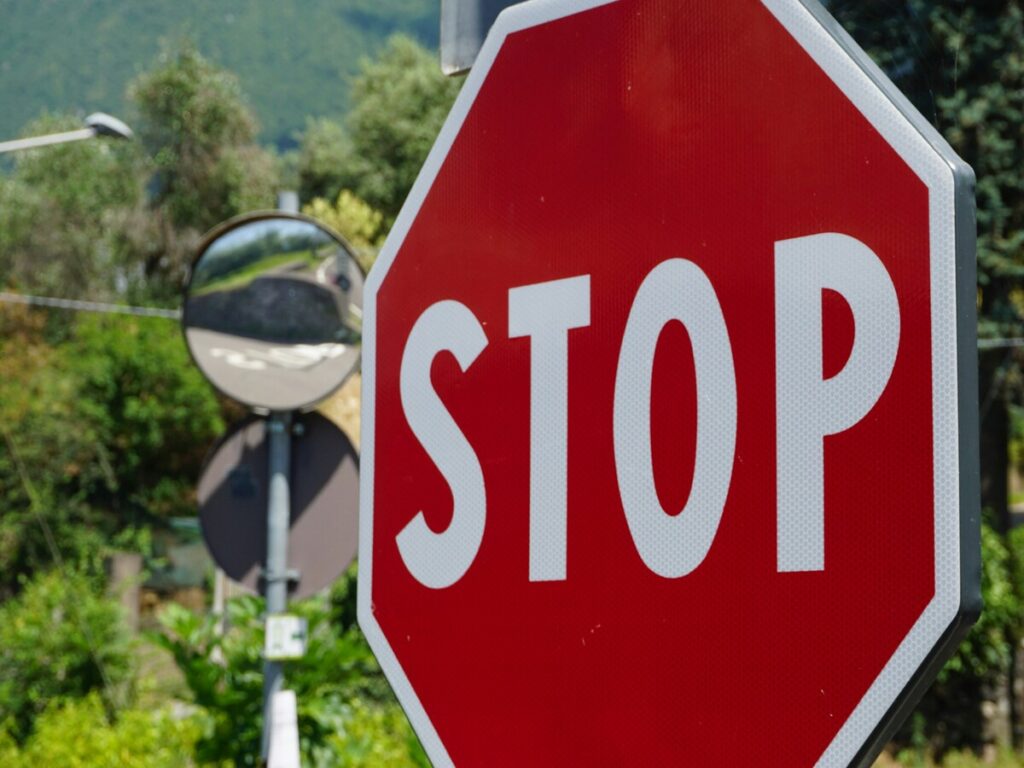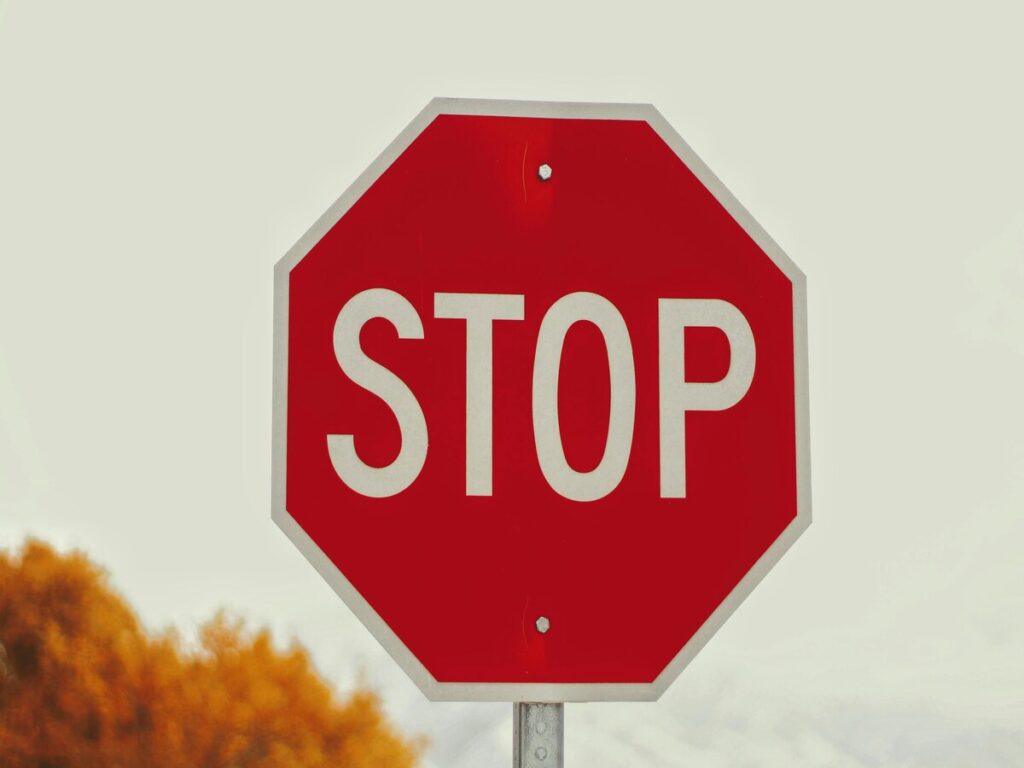
당신이 필요한 모든 곳, 즉 학교에 살고 있다고 상상해보십시오, 공원, 백화점, 그리고 의사 - 짧은 산책이나 자전거 타기입니다.. 이것이 아이디어입니다 15-미세한 도시. 활발하고 친환경적인 방법을 사용하여, 걷는 것처럼, 자전거, 또는 e- 스쿠터를 라이딩합니다, 여행을 쉽고 모든 사람이 이용할 수 있도록합니다.
미세 혈압을 사용하는 도시는 큰 개선을 본다. 예를 들어:
- 도크리스 전자 스쿠터는 사람들이 스테이션 근처의 버스와 기차에 연결하도록 도와줍니다..
- 자카르타와 멕시코 시티와 같은 도시에서, 미세종성과 대중 교통을 혼합하면 더 많은 사람들이 운송에 공정한 접근을 제공합니다..
- Fortaleza, 브라질, 미세 분들이 여행 옵션이 향상되고 더 나은 이웃을 변화시키는 방법을 보여줍니다..
그러나 문제가 있습니다: 자동차는 종종 도보 지역을 인수합니다, 안전하지 않게 만듭니다. 이곳은 도로 볼라드가 도움이되는 곳입니다. 이 작은 기둥은 자전거와 도보 차선을 보호합니다, 자동차 속도를 늦추십시오, 공유 공간을 안전하게 유지하십시오. 걷는 지역을 지키면, 볼라드는 이웃을 더 건강하게 만듭니다, 더 안전합니다, 그리고 모두를위한 친근한.
주요 테이크 아웃
- Bollards는 차를 걷고 자전거 공간에서 멀리 떨어 뜨립니다. 이것은 모든 사람들에게 거리를 더 안전하고 재미있게 만듭니다.
- 도시는 걷기와 자전거를 홍보하여 사람들이 건강을 유지하도록 도울 수 있습니다.. 이것은 오염을 낮추고 공기 청정기를 유지합니다.
- 볼라드를 조심스럽게 배치하면 휠체어와 유모차가 쉽게 움직일 수 있습니다. 또한 사람들을 위해 자동차를 멀리 떨어 뜨립니다.
- 볼라드는 많은 일을 할 수 있습니다, 보류 식물이나 자전거처럼. 이것은 공공 장소를 더 좋고 더 유용하게 만듭니다.
- 커뮤니티가 볼라드 스팟을 계획하는 데 도움이 될 때, 현지 요구가 충족됩니다. 이것은 더 안전하고 더 잘 연결된 지역을 만듭니다.
도로 볼라드와 그들의 목적은 무엇입니까??
도로 볼라드의 정의 및 유형
당신은 아마도 보았을 것입니다 도로 볼라드 ~ 전에, 당신이 그들의 이름을 몰랐더라도. 이것들은 짧습니다, 자동차가 특정 지역에 들어가는 것을 막는 강력한 게시물. 그들은 걷거나 자전거를 타는 사람들을 보호하기 위해 차량을 차단합니다. 이것은 교통량이 더 나아지면서 사람과 건물을 모두 안전하게 유지합니다..
다른 종류가 있습니다 도로 볼라드, 특정 용도로 각각. 간단한 개요는 다음과 같습니다:
| 유형 | 설명 |
|---|---|
| 자동 볼라드 | 이들은 특수 시스템을 사용하여 스스로 위나 아래로 이동합니다.. |
| 반자동 볼라드 | 이들은 수동 작업이 필요합니다, 그들을 당기거나 제거하는 것과 같습니다. |
| 고정 된 볼라드 | 이것들은 한 곳에 머무르며 장기 용도로 좋습니다.. |
일부 도로 안전 볼라드는 매우 강합니다, 강철 또는 콘크리트로 만들어졌습니다. 이들은 큰 충돌을 처리하고 중요한 장소를 손상으로부터 보호 할 수 있습니다..
도로 볼라드의 주요 기능
도로 볼라드 간단 해 보일 수 있습니다, 그러나 그들은 중요한 일을합니다. 그들이 도움이되는 방법은 다음과 같습니다:
- 보행자 인프라를 보호하십시오: 그들은 보도에서 차를 유지합니다, 도보 공간을 더 안전하게 만듭니다.
- 트래픽 흐름을 규제합니다: 제한된 지역에서, 그들은 자동차를 안내하고 무단 자동차를 차단합니다.
- 안전을 향상시킵니다: 그들은 사고를 방지하기 위해 자전거 차선과 걷는 길에서 자동차를 분리합니다..
일부 도로 볼라드는 충돌로 평가됩니다, M30 또는 M50처럼. 이 등급은 그들이 처리 할 수있는 힘을 보여줍니다. 예를 들어, M50 볼라드는 큰 트럭을 막을 수 있습니다 50 MPH. 이것은 높은 보안 영역에서 매우 유용하게 만듭니다.
도로 볼라드를 통한 도시 안전 및 접근성 향상
Bollards는 자동차를 차단하는 것이 아니라 도시를 쉽게 사용할 수 있도록합니다.. 걷는 지역에서 자동차를 보관함으로써, 그들은 걷기 위해 더 안전한 공간을 만듭니다, 자전거, 그리고 다른 작은 차량. 이것은 걷는 길이 우선 순위 인 경우에 특히 유용합니다..
현명하게 배치 된 볼라드는 모든 사람들이 돌아 다니는 데 도움이 될 수 있습니다. 예를 들어, 그들은 휠체어와 유모차가 통과 할 수 있도록 간격을 가질 수 있지만 자동차는 할 수 없습니다.. 이 사려 깊은 설정은 공공 장소를 열고 유용하게 만듭니다..
요컨대, 도로 볼라드 단순한 게시물 이상입니다. 그들은 도시를 더 안전하게 만드는 도구입니다, 더 조직화되었습니다, 모든 사람이 즐길 수 있습니다.
15 분 도시에서 볼라드의 역할

트래픽이 적은 지역을 시행합니다
차가 적은 차분한 거리를 걸어 본 적이 있습니까?? 그것이 바로 뒤에있는 아이디어입니다 트래픽이 적은 지역 (LTNS). 이 지역은 자동차 교통량을 줄이기 위해 만들어졌습니다.. 그들은 걷기와 자전거를 타기 위해 더 안전하고 나아집니다. 볼라드는이 일을하는 데 중요합니다. 그들은 작은 거리를 지름길로 사용하는 것을 차단하지만 여전히 주민들이 운전하게합니다..
볼라드가 조용한 거리를 만드는 데 도움이되는 방법은 다음과 같습니다:
- 볼라드는 자동차가 바로 가기를하는 것을 막습니다, 트래픽을 많이 줄입니다.
- 연구에 따르면 LTN은 트래픽을 줄이고 걷기 및 자전거 타기를 더 안전하게 만듭니다..
- 런던에서, LTN의 부상이 떨어졌습니다 50%, 워커를 가장 많이 돕습니다.
차를 꺼내어, 볼라드는 거리를 지역 사회 공간으로 바꿉니다. 조용한 도로가 보입니다, 클리너 공기, 그리고 모두를위한 더 안전한 장소.
미세 흡수 차선 보호
자전거와 e- 스쿠터는 매일 인기를 얻고 있습니다. 그러나 그 안에 주차 된 차가있는 것처럼 자전거 차선을 망치는 것은 없습니다.. 볼라드는이 문제를 해결합니다. 그들은 자전거 차선을 자동차 교통에서 분리합니다, 모든 사람에게 자신의 공간을 제공합니다.
자전거 도로를 따라 볼라드가 배치 될 때, 그들:
- 자동차가 자전거 나 스쿠터 레인에 들어가는 것을 막으십시오.
- 차량이 주차하지 않아야하지 않아야합니다.
- 라이더와 스쿠터 사용자를 위해 자전거 레인을 더 안전하게 만드십시오.
자동차 나 주차 차량에 대해 걱정하지 않고 자전거를 타는 것을 상상해보십시오. 볼라드는 그것을 가능하게합니다. 그들은 자전거 차선을 보호하여 안전하고 자신있게 탈 수 있습니다..
차분한 교차점과 공유 공간
교차점과 공유 공간은 자동차가 인수 할 때 지저분해질 수 있습니다.. 볼라드는 자동차를 늦추고이 지역을 더 안전하게 만드는 데 도움이됩니다.. 바쁜 교차로 또는 공유 구역 근처에 볼라드를 배치하면 큰 차이가 생길 수 있습니다..
연구는이 공간에서 볼라드의 이점을 보여줍니다:
| 주요 결과 | 설명 |
|---|---|
| 도로 사용자 선호도 | 안전하고 편안한 느낌의 디자인을 좋아하는 워커와 바이커. |
| 디자인 영향 | 볼라드와 같은 장벽은 사람들을 더 안전하게 느끼게 만듭니다. |
| 자동차를 싫어합니다 | 사람들은 공유 공간을 인수하는 자동차를 좋아하지 않습니다. |
볼라드를 추가하면 바쁜 교차점이 더 안전한 곳으로 바뀔 수 있습니다.. 워커, 자전거 타는 사람, 그리고 스쿠터 사용자는 더 편안하게 느낄 것입니다. 이러한 변화는 더 많은 사람들이 걷거나 자전거를 장려합니다, 이웃을 더 활기차고 연결시킵니다.
볼라드가 미세 분위기를 안전하게 지키는 방법
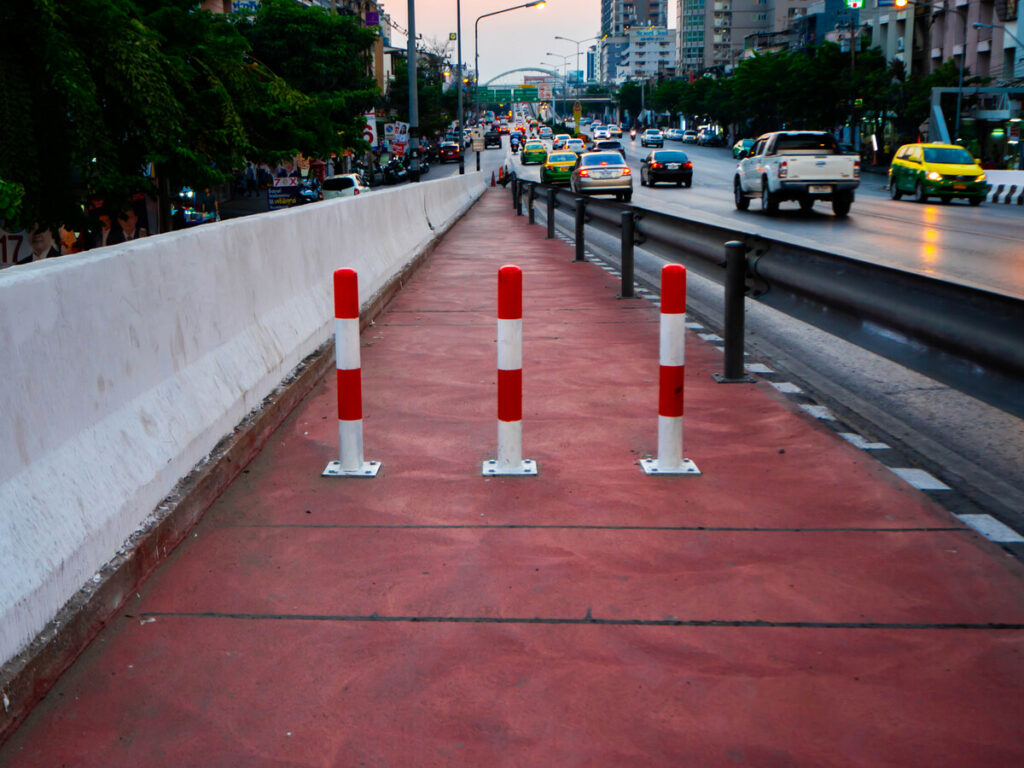
워커와 바이커로부터 자동차를 멀리 두십시오
바쁜 도로 근처에서 안전하지 않은 느낌이 들었던 적이 있습니까?? 볼라드는 이것을 고치는 데 도움이됩니다. 이 강력한 기둥은 자동차를 보도와 자전거 도로에서 멀리 떨어 뜨립니다.. 그들은 워커와 자전거 타는 사람이 자신의 안전한 공간을 가지고 있는지 확인합니다..
볼라드는 길을 따라 경비원처럼 행동합니다. 그들은 차가 걷기 또는 자전거를 타기 위해 지역에 들어가는 것을 막습니다.. 이것은 여행을 더 안전하고 편안하게 만듭니다. 자동차가 너무 가까워 질 걱정없이 여행을 즐길 수 있습니다..
전 세계의 도시는 볼라드를 사용하여 안전한 구역을 만듭니다.. 예를 들어, 코펜하겐에서, 볼라드는 자전거 도로를 보호합니다. 이것은 자전거 타는 사람에게 자신의 공간을 제공하고 더 많은 사람들이 자전거 나 스쿠터를 타도록 격려합니다.. 또한 자동차 사용을 줄이는 데 도움이됩니다, 환경에 더 좋습니다.
자동차가 공유 공간을 인수하는 것을 막는 중지
공유 공간, 자전거 차선이나 스쿠터 주차장처럼, 종종 문제에 직면합니다. 자동차는 때때로 주차하거나 운전하지 않아야합니다. 이것은 바이커 및 스쿠터 사용자에게 위험 할 수 있습니다.. 볼라드는이 문제를 해결하는 간단한 방법입니다.
오른쪽 지점에 도로 볼라드를 배치함으로써, 자동차는 공유 지역을 벗어나지 않습니다. 이 게시물은 장벽으로 작용합니다, 자동차가 아닌 사용자를위한 공간 보호. 예를 들어, 뉴욕시에서, Bollards는 자전거 차선의 주차에서 차를 차단합니다. 이것은 모든 사람이 자전거를 더 안전하고 쉽게 만듭니다.
공유 공간이 보호 될 때, 더 많은 사람들이 그들을 사용합니다. 더 많은 자전거를 볼 수 있습니다, 스쿠터, 이 지역을 즐기는 워커. 이것은 물건을 더 안전하게 만들뿐만 아니라 지역 사회에서 사람들을 모으는 것입니다..
도시를 현명한 배치로보다 안전하게 만듭니다
볼라드는 무작위로 배치되지 않으며 안전을 위해 신중하게 계획되어 있습니다. 잘 배치 될 때, 그들은 도시를 모두에게 더 안전하게 만듭니다. 예를 들어, 교차로 근처의 볼라드는 차를 느리게합니다. 이것은 워커와 바이커들에게 안전하게 건너는 더 많은 시간을 제공합니다..
스마트 배치가 도움이되는 방법은 다음과 같습니다:
- 볼라드는 차량이 차량 구역에 들어가는 것을 차단합니다.
- 일부 볼라드에는 트래픽과 사람을 추적 할 수있는 센서가 있습니다. 이것은 도시가 안전을 향상시키는 데 도움이됩니다.
- Bollards의 명확한 경계는 공유 공간을 덜 혼란스럽게 만듭니다.
바쁜 도시 광장을 상상해보십시오. 볼라드없이, 자동차는 운전하고 혼란을 일으킬 수 있습니다. 볼라드와 함께, 이 지역은 걷기에 안전 해집니다, 자전거, 그리고 스쿠터. 사람들은 더 안전하다고 느낍니다, 그리고 공간이 더 환영 해집니다.
암스테르담과 같은 도시에서, 볼라드는 걷는 지역을 보호하지만 여전히 비상 차량을. 이 스마트 디자인은 필요할 때 액세스 할 수 있도록 모든 사람을 안전하게 유지합니다.. 도시를 더 나은 도시로 만들 수있는 사려 깊은 방법입니다..
사례 연구: 실제 응용 프로그램
파리, 프랑스-15 분 도시 아이디어를 이끌고 있습니다
파리는 도시의 작동 방식을 바꾸는 최고의 예입니다.. Covid-19 동안, 파리는 15 분의 도시 아이디어를 채택했습니다. 이것은 학교를 의미합니다, 공원, 그리고 상점은 가까이 있습니다. 단지 쉬운 것이 아닙니다; 또한 자동차 사용을 줄입니다. 덜 운전하면 지구를 돕고 이웃을 더 안전하고 더 멋지게 만듭니다..
이런 일을하기 위해, 파리는 거리를 바꿨습니다. 볼라드는 자동차와 분리 된 자전거에 추가되었습니다. 그들은 또한 차를 차단했습니다 보행 전용 지역. 이 작은 업데이트는 큰 영향을 미쳤습니다. 지금, 파리의 자전거는 더 안전하다고 느낍니다, 그리고 걷기는 더 즐겁습니다.
그만큼 도시 기후 리더십 그룹 (C40) 파리의 노력을 칭찬했습니다. 그들은 그것을 징계 이후의 도시 회복의 훌륭한 예라고 불렀습니다.. 자동차 대신 사람들에게 집중함으로써, 파리는 더 친환경적이되었습니다, 더 건강합니다, 그리고 더 많은 연결.
바르셀로나, 스페인 - 슈퍼 블록 계획
바르셀로나는“슈퍼 블록”아이디어로 대담한 것을 시도했습니다. 방문하는 경우, 당신은 공공 사각형처럼 느껴지는 거리를 볼 수 있습니다. 슈퍼 블록은 여러 블록을 결합하고 그 안에 자동차 접근을 제한합니다.. 이것은 걷기를위한 공간을 만듭니다, 자전거, 그리고 교통 걱정없이 놀아요.
볼라드는 슈퍼 블록이 작동하는 데 중요합니다. 그들은 차가 절단되는 것을 막지 만 비상 차량을 허용합니다.. 이 간단한 변화는 이웃을 개선했습니다. 바쁜 거리는 이제 침착하고 환영합니다. 아이들은 놀아요, 이웃은 이야기합니다, 그리고 자전거 타는 사람은 자동차가없는 지역을 즐깁니다.
포틀랜드, 오레곤 - 그린 웨이 교통 관제
포틀랜드는 자전거 친화적 인 것으로 유명합니다. 그린 가로는 큰 이유입니다. 이 조용한 거리는 걷기와 자전거를 타기 위해 만들어졌습니다. 자동차가 바로 가기로 사용하는 것을 막기 위해, 포틀랜드는 볼라드를 사용합니다. 그들은 트래픽을 통해 차단하지만 현지인들은 들어오고 나가게합니다..
이것은 만듭니다 그린 웨이모두에게 더 안전하고 재미있는. 빠른 차에 대해 걱정하지 않고 걸어 갈 수 있습니다.. 트래픽이 적 으면이 거리가 더 조용하고 더 멋지게 만듭니다. 포틀랜드는 작은 변화를 보여줍니다, 볼라드처럼, 도시 여행을 많이 향상시킬 수 있습니다.
커뮤니티 상황을위한 볼라드 설계
가시성 및 안전 기능
볼라드는 쉽게 볼 수 있어야합니다. 이것은 밤이나 어두운 곳에서 특히 중요합니다.. 밝은 색상과 반사 표면이 눈에 띄는 데 도움이됩니다. 일부 볼라드에는 조명이 내장되어 있습니다. 이 조명은 거리를 더 안전하게 만들고 도시를 현대적인 모습으로 만듭니다..
볼라드는 또한 도보 지역에서 자동차를 보관합니다. 이것은 바쁜 지점에서 사고를 예방하는 데 도움이됩니다. 예를 들어:
- 반사 표면과 조명은 어둠 속에서 볼라드가 보이게 만듭니다..
- 고정 된 볼라드는 자동차가 붐비는 보도에 들어가는 것을 막습니다.
- 도로와 보도 사이의 명확한 경로는 충돌을 줄입니다.
안전과 가시성에 중점을 둡니다, 볼라드는 모두를 보호합니다. 걷는 상관없이, 자전거, 또는 운전, 그들은 여행을 더 안전하게 만듭니다.
보행성에 대한 접근성 고려 사항
볼라드는 공간을 쉽게 사용할 수 있도록해야합니다, 어렵지 않습니다. 제대로 배치 된 경우, 그들은 휠체어를 차단할 수 있습니다, 유모차, 또는 이동성 문제가있는 사람들. 디자이너는이를 피하기 위해 특별한 규칙을 따릅니다. 이 규칙은 볼라드가 간격을두고 올바르게 배치되도록합니다.
연구에 따르면 접근성이 중요한 이유를 보여줍니다. 어떤 곳에서, 인도네시아처럼, BALLARD 배치는 휠체어 사용자를 차단했습니다. 이것은 사려 깊은 디자인이 왜 그렇게 중요한지 증명합니다. 잘 배치 된 볼라드가 허용됩니다:
- 휠체어와 유모차가 쉽게 이동합니다.
- 문제없이 공공 장소를 즐길 수있는 모든 능력의 사람들.
볼라드가 모든 사람을 위해 설계되었을 때, 그들은 보행 성을 향상시킵니다. 그들은 도시를 더 환영하고 포괄적으로 만듭니다.
유연하고 다기능 디자인
볼라드는 차량 차량 이상을 할 수 있습니다. 유연한 디자인을 통해 다른 목적을 달성 할 수 있습니다. 예를 들어, 개폐식 볼라드는 사건이나 비상 사태에 대해 낮을 수 있습니다. 일부 볼라드는 심지어 파종기로 일합니다, 벤치, 또는 자전거 랙, 아름다움과 기능 추가.
다기능 볼라드가 커뮤니티를 도울 수있는 방법은 다음과 같습니다:
| 혜택/지침 | 설명 |
|---|---|
| 공간을 더 매력적으로 만듭니다 | 장식적인 볼라드는 공공 장소가 어떻게 보이고 느껴지는지를 향상시킵니다. |
| 친환경 선택 지원 | 태양열 및 녹색 재료는 환경에 대한 피해가 낮습니다. |
| 큰 장벽을 대체합니다 | 볼라드는 울타리 나 벽을 대신 할 수 있습니다. |
| 야외 재미를 장려합니다 | 멋진 디자인은 사람들을 끌어 들일 수 있습니다, 자전거, 그리고 그 지역을 즐기십시오. |
믹싱 스타일로, 유연성, 그리고 유용성, 볼라드는 도시 생활을 향상시킵니다. 그들은 트래픽을 안내합니다, 이벤트 관리, 거리를 더 매력적으로 만듭니다. 이 작은 게시물은 도시 공간에 큰 변화를 가져옵니다.
지역 사회에서 볼라드의 이점
거리를 더 안전하고 걷기가 더 쉽게 만듭니다
볼라드는 도보 지역에서 자동차를 차단하여 이웃을 안전하게 유지하는 데 도움이됩니다.. 이것은 사고의 위험을 낮추고 거리가 차분하게 느끼게합니다.. 바쁜 도로는 지저분 해 보일 수 있습니다, 그러나 볼라드는 워커와 바이커를위한 명확한 공간을 만듭니다. 이 분리는 모든 사람이 더 안전하고 편안하게 느끼도록 도와줍니다.
자동차가 보도와 자전거 도로에서 벗어나면 걷기가 더 쉬워집니다.. 자동차를 피하지 않고도보기를 즐길 수있는 거리를 걷는 그림. 볼라드는 이것을 가능하게 만듭니다. 그들은 또한 더 많은 사람들이 걷도록 격려합니다, 지역 사회의 건강과 행복에 좋은.
자전거를 홍보하고 깨끗한 행성을 위해 걷는 것
거리가 안전 할 때, 사람들은 걷거나 자전거를 타게 될 가능성이 더 높습니다. 볼라드는 자전거 차선을 보호합니다, 더 안전하고 환영합니다. 운전 대신 걷기 또는 자전거를 선택하면 오염을 줄이고 건강한 지구를 지원합니다..
차선이 안전하다는 것을 알면 자전거를 타는 것이 더 쉽습니다.. 볼라드는 라이더에게 자신의 공간을 제공합니다, 자동차가 없습니다. 이것은 환경에 도움이되고 모든 사람들이 주변에 갈 수있는 저렴한 옵션을 제공함으로써 교통 수단을 공정하게 만듭니다..
자전거와 스쿠터를 정리하십시오
Bollards는 또한 자전거와 스쿠터 주차를 도와줍니다. 그들은 마이크로 양식 주차를위한 특별한 장소를 만듭니다, 물건을 깔끔하고 깔끔하게 유지합니다. 이것은 주차 장소를 찾는 것이 간단하게 만들어지고 걷기 위해 보도를 명확하게 유지합니다..
공공 장소가 조직 될 때, 사람들은 그들을 더 많이 사용합니다. 볼라드는 지역 사회 가이 지역을 모아서 즐기도록 격려합니다. 자전거 랙이든 스쿠터 스테이션이든, 이 공간은 사람들을한데 모으고 있습니다. 이와 같은 작은 변화는 이웃을 더 친근하고 더 연결시킵니다..
도전과 고려 사항
너무 많은 볼라드와 지저분한 거리
바쁜 거리를 걷는 붐비는 느낌이 있습니까?? 볼라드가 도움이 될 수 있습니다, 하지만 한 지점에서 너무 많은 사람들은 문제가 될 수 있습니다. 너무 많을 때, 거리는 지저분하고 혼란스러워 보입니다. 이것은 사람들이 쉽게 돌아 다니기가 더 어려워집니다.. 더블린과 같은 곳에서, 벤치에서 혼란, 쓰레기통, 그리고 자전거 랙은 비슷한 문제를 일으켰습니다. 도시를 나쁘게 보이게 할뿐만 아니라 걷기도 덜 즐겁게 만듭니다..
시력 문제가있는 사람들을 위해, 볼라드는 위험 할 수 있습니다. 잘 배치되지 않았기 때문에 하나에 부딪 치는 것을 상상해보십시오. 사람들의 이야기는 이것이 얼마나 실망스럽고 고통 스러울 수 있는지 보여줍니다.. 도시는 이러한 문제를 피하기 위해 더 잘 계획해야합니다. 볼라드는 걷기를 더 쉽게 만들어야합니다, 어렵지 않습니다.
볼라드를 고치고 강하게 유지합니다
볼라드는 마지막으로 만들어졌습니다, 그러나 그들은 여전히 깨질 수 있습니다. 날씨, 사고, 또는 기물 파손은 시간이 지남에 따라 손상 될 수 있습니다. 부러진 볼라드는 안전하지 않을 수 있습니다. 구부러 지거나 녹슨 포스트는 누군가를 여행하거나 차를 멈추지 않을 수 있습니다.. 정기적 인 수표 및 수리는 볼라드를 계속 작동시키는 데 중요합니다..
바쁜 지역에서 손상된 볼라드를 보는 것에 대해 생각해보십시오.. 나쁘게 보이고 사람들이 덜 안전하다고 느끼게합니다. 도시는 강력한 재료를 사용하고 자주 볼라드를 확인해야합니다. 이것은 그들이 좋아 보이고 일을 계속합니다.
볼라드를 모두에게 쉽게 사용하기 쉽게 만듭니다
볼라드는 거리를 더 안전하게 만들어야합니다, 그러나 배치가 잘못되면 문제가 발생할 수 있습니다. 그들이 너무 가까이다면, 그들은 휠체어를 차단할 수 있습니다, 유모차, 또는 배달 카트. 이것은 모든 사람이 움직이기가 더 어려워집니다. 디자이너는 사람들이 통과 할 수있는 충분한 공간을 떠나야합니다..
비상 접근도 중요합니다. 이사 할 수없는 볼라드는 응급 상황에서 도움이 느려질 수 있습니다.. 암스테르담과 같은 도시는 올라갈 수있는 볼라드를 사용합니다.. 이를 통해 워커를 안전하게 유지하면서 비상 차량을 통과시킬 수 있습니다. 이와 같은 스마트 디자인은 볼라드가 모두에게 도움이되도록합니다, 그들을 다치게하지 마십시오.
정책 및 계획 권장 사항
도시 교통 계획에 볼라드 추가
볼라드는 처음에는 중요하지 않은 것처럼 보일 수 있습니다. 그러나 그들은 이웃을 더 안전하고 쉽게 걸을 수 있도록 도와줍니다.. 도시는 운송 계획에 볼라드를 사용하여 걷기 및 자전거 공간을 보호 할 수 있습니다.. 이것은 거리가 자동차 대신 사람들에게 집중하는 데 도움이됩니다.
예를 들어, 도로 볼라드는 걷기 공간을 표시 할 수 있습니다, 자전거, 그리고 스쿠터. 이것은 공공 장소를 모든 사람에게 쉽게 사용할 수있게합니다. 그들은 또한 차가 워커를위한 장소에 들어가는 것을 막지 않습니다.. 도시 계획에 볼라드를 추가하면 더 안전한 거리가 생기고 걷기와 자전거를 장려합니다..
더 나은 솔루션을 위해 커뮤니티와 협력합니다
각 지역마다 요구가 다릅니다. 한 영역에서 작동하는 것은 다른 영역에서 작동하지 않을 수 있습니다.. 그렇기 때문에 현지 사람들에게 아이디어를 요청하는 것이 중요합니다.. 주민의 말을 듣는 것은 자신의 요구에 맞는 계획을 세우는 데 도움이됩니다..
예를 들어, 일부 지역은 학교 근처에서 볼라드가 필요할 수 있습니다. 다른 사람들은 플라자에서 자동차를 차단하기를 원할 수도 있습니다. 현지인들과 함께 일함으로써, 도시는 롤라드가 문제를 일으키지 않고 걷기를 개선 할 수 있도록 할 수 있습니다.. 이 팀워크는 신뢰를 구축하고 이웃이 더 연결되어 있다고 느끼게합니다..
안전 데이터를 사용한 계획 점검 및 변경
Bollards가 추가 된 후에는 작업이 수행되지 않습니다. 도시는 잘 작동하는지 확인해야합니다. 그들은 거리를 더 안전하게 만들고 있습니까?? 그들은 사람들이 쉽게 돌아 다니도록 돕고 있습니까?? 안전 데이터를 연구함으로써, 도시는 필요할 때 변경할 수 있습니다.
예를 들어, 볼라드가 휠체어를 차단하는 경우, 문제를 해결하기 위해 이동할 수 있습니다. 정기적 인 수표는 또한 볼라드가 안전을 향상 시키거나 트래픽을 줄일 수있는 위치를 보여줍니다.. 이 진행중인 과정은 이웃을 안전하고 쉽게 걸어 가면서 수년간 걸을 수 있습니다..
Bollards는 Micromobility를 안전하게 유지하고 15 분의 도시 아이디어가 성공하도록 돕는 데 중요합니다.. 그들은 워커와 자전거 타는 사람을 보호 할뿐만 아니라 이웃도 깨끗하고 건강하게 만듭니다.. 공유 공간에서 자동차를 보관함으로써, 볼라드는 모든 사람들에게 거리를 더 친숙하게 만듭니다.
볼라드의 이점은 쉽게 볼 수 있습니다. 그들은 지역을 더 안전하게 만듭니다, 사람들이 걷거나 자전거를 더 많이 데려 가게하십시오, 지역 사회 건강을 향상시킵니다. 도시 플래너와 지역 주민들은 함께 협력하여 현명하게 볼라드를 배치해야합니다.. 이 팀워크는 더 안전합니다, 모두가 즐길 수있는 더 환영하는 공간.
FAQ
볼라드는 무엇으로 만들어 졌습니까??
볼라드는 같은 재료로 만들어집니다 강철, 콘크리트, 또는 플라스틱. 강철은 매우 강합니다, 플라스틱은 가볍고 구부릴 수 있습니다. 일부는 지구를 돕기 위해 친환경 재료를 사용합니다. 자료는 그 일에 달려 있습니다, 안전이나 장식처럼.
볼라드를 제거하거나 조정할 수 있습니다?
예, 일부 도로 볼라드는 움직일 수 있습니다! 개폐식 또는 탈착식 볼라드는 때때로 자동차 접근이 필요한 곳에 적합합니다., 이벤트 동안처럼. 고정 된 볼라드, 하지만, 장기 안전을 위해 한 곳에 머물러 있습니다.
볼라드는 안전을 어떻게 향상시킬 수 있습니까??
볼라드 별도의 차, 자전거, 그리고 워커. 그들은 자동차가 차량 구역에 들어가는 것을 막습니다, 사고 감소. 현명하게 배치했을 때, 그들은 또한 차를 느리게합니다, 거리를 더 안전하게 만듭니다.
볼라드 휠체어 친화적입니다?
예, 잘 설계된 경우! 볼라드는 휠체어로 간격을두고 있습니다, 유모차, 그리고 워커는 쉽게 지나갈 수 있습니다. 좋은 계획은 모든 사람이 공공 장소를 사용할 수 있도록합니다.
볼라드는 유지 보수가 필요합니다?
예, 그러나별로. 정기적 인 수표는 안전하고 작동합니다. 날씨 나 사고는 그들을 손상시킬 수 있습니다, 그래서 도시는 볼라드를 고정하여 좋은 몸매를 유지합니다..
💡 팁: 부러진 볼라드가 보이면, 지역 시티 사무소에 빨리 수리 할 수 있도록!

